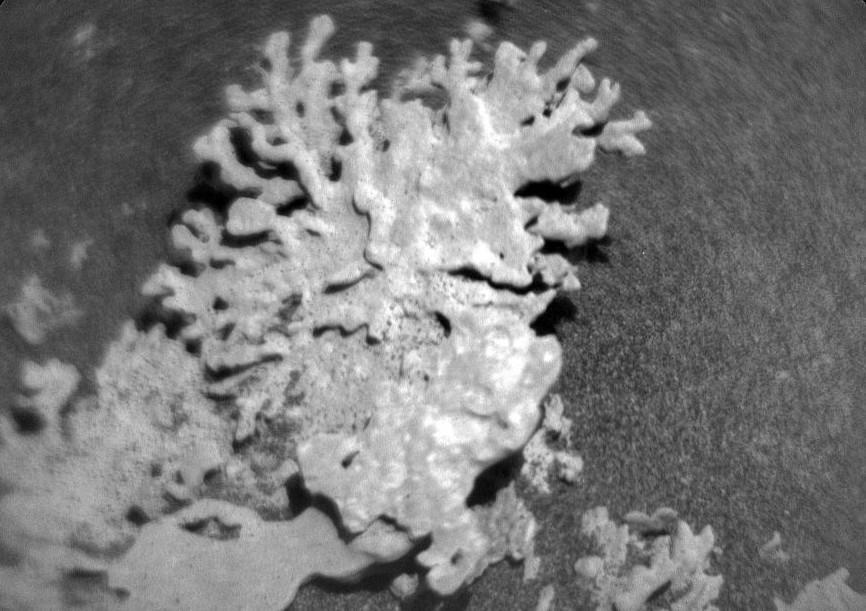
Coral-shaped Rock Spotted on Mars, NASA Shares Pic
NASA’s Curiosity Mars rover has been exploring the Martian surface for years, and recently, it sent back some fascinating images of a rock that looks uncannily like a piece of coral. The rock was discovered in the Gale Crater, a large impact basin on Mars, and scientists believe it to be around a billion years old.
The images were captured using the rover’s ChemCam, a laser-induced breakdown spectroscopy (LIBS) instrument that is designed to analyze the chemical composition of rocks. The ChemCam works by firing a laser at the rock, which creates a plasma that is then analyzed to determine the chemical makeup of the rock. This technique allows scientists to study the rock’s composition without having to physically bring it back to Earth.
The coral-shaped rock is located in the Murray Formation, a geological layer of sedimentary rocks that is believed to have formed around 3.5 billion years ago. The rock is estimated to be around 1.2 billion years old, making it one of the oldest rocks on the Martian surface.
The discovery of this coral-like rock is significant because it provides scientists with a unique opportunity to study the geological history of Mars. By analyzing the rock’s composition and structure, scientists can learn more about the conditions that existed on Mars billions of years ago, and how they may have influenced the planet’s evolution.
The rock’s coral-like shape is likely due to the way it was formed. The rock is made up of calcium carbonate, a common mineral found in many types of rocks. Over time, the calcium carbonate may have been deposited in a coral-like structure, creating the rock’s unique shape.
The discovery of this coral-like rock is not the only exciting find made by the Curiosity rover. In 2015, the rover discovered evidence of ancient lakes on Mars, which suggests that the planet may have once been capable of supporting life. More recently, the rover discovered evidence of methane in the Martian atmosphere, which could be a sign of microbial life.
The Curiosity rover has been exploring Mars since 2012, and has traveled over 20 kilometers (12.4 miles) on the Martian surface. The rover is equipped with a variety of instruments designed to study the Martian geology, climate, and potential habitability.
The discovery of this coral-like rock is just the latest in a long line of exciting finds made by the Curiosity rover. As NASA continues to explore Mars, we can expect to learn even more about the planet’s history, geology, and potential for supporting life.
Source: https://www.jpl.nasa.gov/images/pia26634-curiositys-chemcam-views-a-rock-shaped-like-coral/






